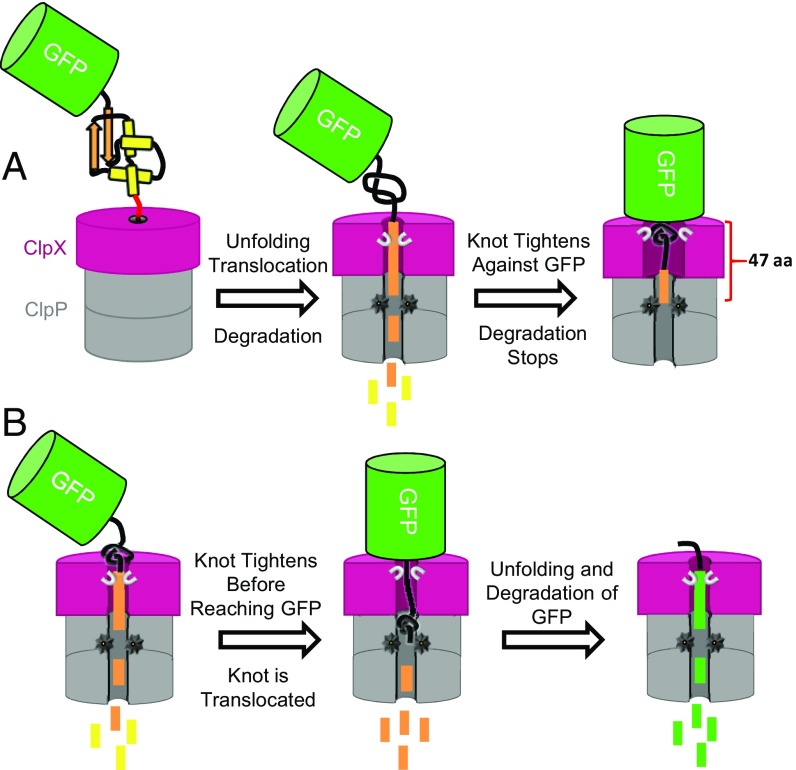Fig. 3.
Model of degradation of knotted multidomain substrates by ClpXP. Two outcomes occur when ClpXP engages a knotted multidomain substrate. (A) The knot of MJ0366 slides and tightens against GFP, protecting GFP from the mechanical unfolding. Eventually, ClpXP releases a partially degraded product of GFP plus a tail of 47 residues. A tight knot increases the number of residues inside the channel of ClpXP from 37 to 38 to about 47: 13 residues required to create a 31 tight knot, minus the diameter of the knot itself (four residues or 1.6 nm) plus 36–37 residues to spam the distance between the pore entrance and the active site of ClpP. (B) The knot of MJ0366 gets tightened far from the GFP folded domain and is translocated through ClpXP pore, leading to GFP degradation.

